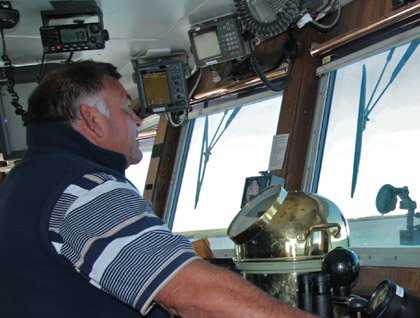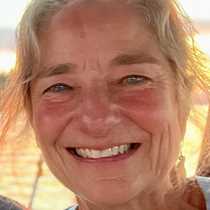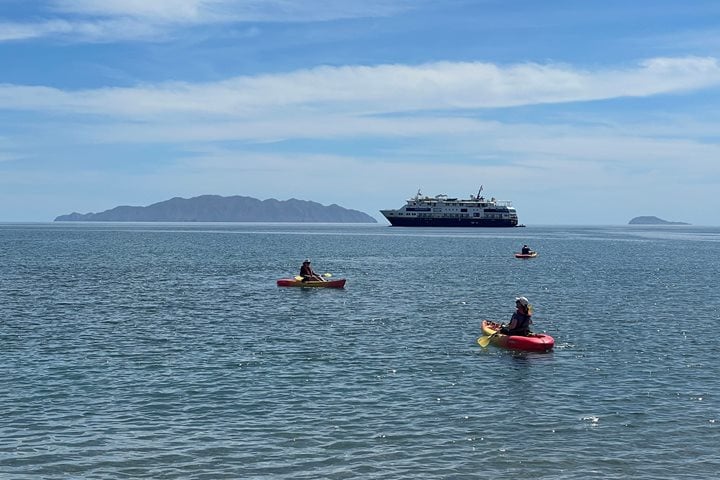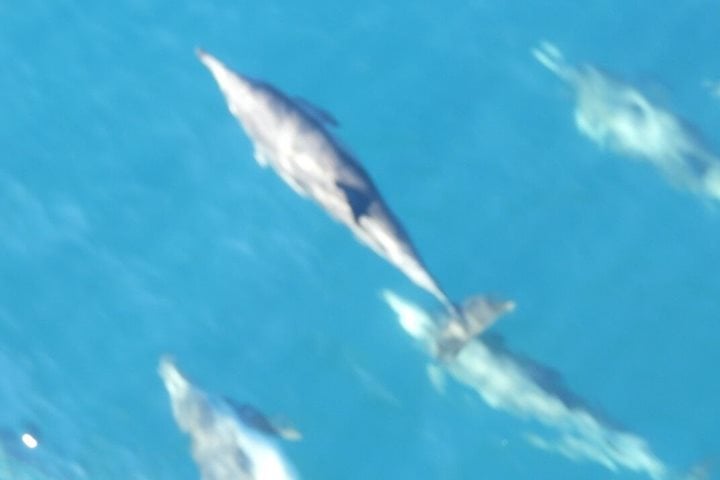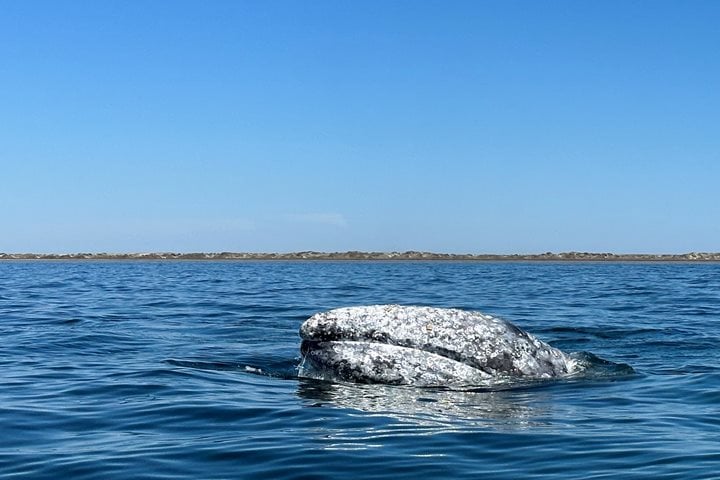We spent the first half of the day traveling north in the Pacific Ocean towards Magdalena Bay. During the morning and early afternoon, naturalist presentations on birds and gray whales familiarized us with the wildlife we’ll be seeing in the coming days. When National Geographic Sea Bird entered the bay at noon a gray whale surfaced and blew nearby.
Magdalena Bay is enormous, and our local pilot Alejandro was on the bridge all afternoon navigating the ship as we traveled 50 miles north through shallow, narrow channels. He maintains homemade buoys along the channel; as tides and currents move sediment, he moves the buoys accordingly. Sandy dunes and mangroves appeared closer to the ship as the channel narrowed, and we had wonderful views of birds on the mudflats, sand flats, and mangroves. Herons, egrets, ibises, frigatebirds, loons, and cormorants in breeding plumage were abundant.
As we stood on the bow, we helped each other see each new bird species. Bottlenose dolphins swam to the ship, and we leaned over the railing and watched them surf the bow wave. Then we saw gray whale mothers and calves—lots of them! The calves were tiny and dark alongside their lighter gray mothers. Their blows dissipated quickly in the breeze, but their backs and tail flukes were easy to see. More than 15 mothers with calves were concentrated in a large, shallow region of the bay. To our west, the barrier island’s mangroves gave way to beautiful sand dunes. As we passed the fishing town of Lopez Mateos, we once again saw many gray whales mothers with calves. We will spend the night at anchor here, surrounded by gray whales and birds.

